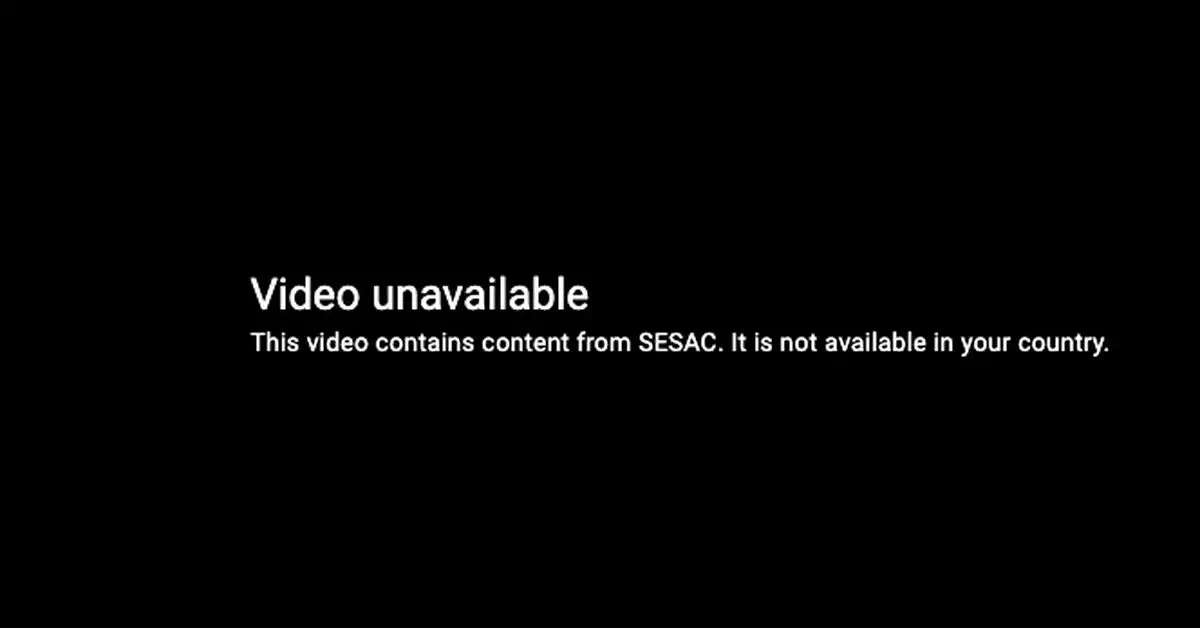On a seemingly ordinary Saturday, a significant portion of music viewers encountered an unexpected disruption while trying to enjoy popular tracks on platforms like YouTube and YouTube Music. Instead of the anticipated melodic tunes, users were faced with an abrupt message stating: “Video unavailable. This video contains content from SESAC. It is not available in your country.” Such a stark notice was likely frustrating for fans expecting to stream hits from renowned artists, including Adele, Kendrick Lamar, and Green Day. This event raises crucial questions about copyright management in the digital age and leaves audiences wondering about the future of their favorite playlists.
To grasp the implications of this disruption, it’s essential to understand the role of SESAC, which stands for the Society of European Stage Authors and Composers. Founded in 1930, SESAC is a relatively smaller organization compared to its competitors, BMI and ASCAP. Notably, it currently oversees the licensing of public performances for over 1.5 million songs from a roster that boasts around 15,000 affiliated songwriters and publishers. Its significance within the music industry is apparent; despite its size, the agency represents a multitude of high-profile artists and has been pivotal in negotiating performance rights for music creators. SESAC’s operations took a noteworthy turn in 2017 when it was acquired by private equity firm Blackstone, further complicating its role in the evolving landscape of music licensing.
The Impact of Licensing Agreements
The unexpected removal of numerous songs from YouTube and YouTube Music can essentially be attributed to the complexities surrounding licensing agreements. While the acquisition of SESAC and its negotiations with tech giants like YouTube has undoubtedly affected the availability of certain music tracks, the failure to renew contracts raises larger questions about the sustainability of such arrangements. While SESAC maintains a searchable database, the transparency regarding which songs have been removed is limited. Some songs, like Kanye West’s “Power,” remain available in certain formats, while others have been blocked entirely, creating confusion among listeners.
YouTube’s response to the situation, articulated by spokesperson Mariana de Felice, underscores the platform’s commitment to copyright laws. The company revealed that it had engaged in good faith negotiations with SESAC but could not finalize a new agreement before previous terms expired. This situation highlights the ongoing struggles that digital platforms face in maintaining a balance between complying with copyright laws and providing an expansive library of content for consumers. YouTube’s efforts to work towards a renewed deal indicate a hopeful outlook that this problem may soon be resolved, but the uncertainty still looms for fans and artists alike.
As discussions between SESAC and YouTube continue, the broader implications remain critical for both the music industry and consumers. Artists rely on platforms like YouTube for exposure and income, while audiences crave access to their favorite songs. The outcome of these negotiations will not only dictate the availability of music but also set precedents for how copyright management will be navigated in the rapidly changing digital landscape. Until an agreement is reached, listeners are left to ponder the fragility of their musical experiences in an era dominated by complex copyright issues.


Leave a Reply